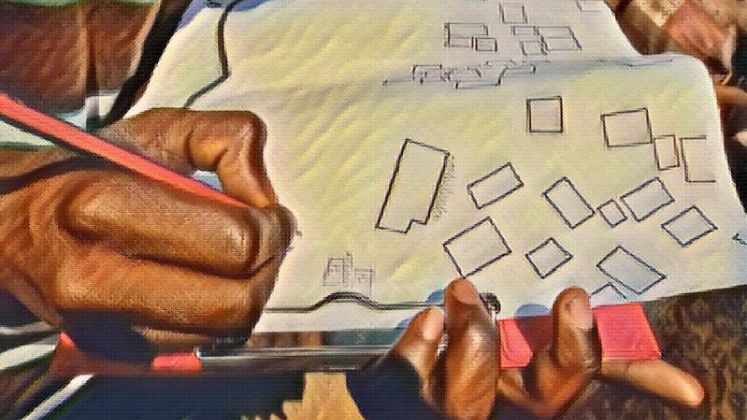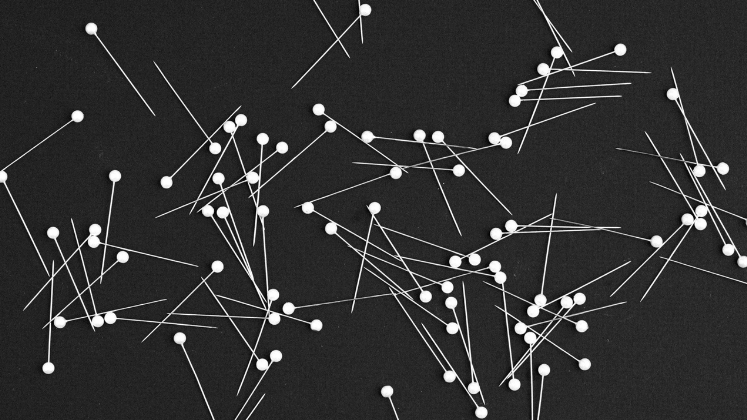In New Mediums, Better Messages?, editors David Lewis, Dennis Rodgers and Michael Woolcock explore how international development is being represented and understood through new insights from practitioners working across a range of communications media. This volume moves forward critical conversations on cultural production about global poverty and development, showing the need for input from producers, consumers and the voices of those being represented, writes John Cameron.
This blogpost originally appeared on LSE Review of Books. If you would like to contribute to the series, please contact the managing editor of LSE Review of Books, Dr Rosemary Deller, at lsereviewofbooks@lse.ac.uk.
New Mediums, Better Messages? How Innovations in Translation, Engagement and Advocacy are Changing International Development. David Lewis, Dennis Rodgers and Michael Woolcock (eds). Oxford University Press. 2022.
 New Mediums, Better Messages? blasts open the conversation about how international development is represented and understood around the world with new insights from practitioners and analysts of a wide range of communications media. The book affirms the case that representations matter: how people, places, organisations and political, economic and social processes are represented in writing, photographs, music, video, art, theatre, blogs and other media (new and old) shapes how global actors, big and small, understand the world and act in response to that understanding.
New Mediums, Better Messages? blasts open the conversation about how international development is represented and understood around the world with new insights from practitioners and analysts of a wide range of communications media. The book affirms the case that representations matter: how people, places, organisations and political, economic and social processes are represented in writing, photographs, music, video, art, theatre, blogs and other media (new and old) shapes how global actors, big and small, understand the world and act in response to that understanding.
Critical analysis of representations of global poverty and development broke into public attention in the wake of the Ethiopian famine and charity appeals of the 1980s. Despite their effectiveness at raising money, these were also widely condemned as ‘poverty porn’: the portrayal of almost always dark-skinned people in the Global South as passive victims of poverty in desperate need of assistance, with development agencies in the Global North cast in the role of saviours. Bob Geldof and Midge Ure’s song, ‘Do they know it’s Christmas?’, became the de-facto anthem of this way of representing and understanding international development.
Critical analysis of the pervasive racist and colonial stereotypes about the Global South (as helpless/lazy/corrupt/dirty/dangerous/victims) and the Global North (as morally and intellectually superior doers of good) is still extremely important, precisely because the stereotypes are so harmful and persistent – from feature films to charitable fundraising campaigns. This edited volume sustains that critique but also opens up the debate about how development is represented by engaging with media, voices and ideas that were often overlooked in the past.
The volume moves forward critical conversations in at least four important ways: insights from the creators of representations; more attention to the responses of audiences; more attention to how people in the Global South represent their own experiences; and new places to look for representations of global poverty and development.
Insights from creators
Most critical analysis of representations of global poverty and development – including my own – has been produced by armchair critics in universities and non-governmental organisations. By contrast, this volume brings in the voices of the creators themselves – a novelist, a playwright, a blogger, musicians and a filmmaker. Reflecting on the process of creating representations of development, these contributors to the volume highlight the multiple tensions and difficult decisions behind their work and their efforts to translate the complexities and nuances of global poverty for Northern audiences with limited background understanding and expectations grounded in traditional stereotypes. In particular, we learn about how they grapple with concerns about decolonisation amidst the competing demands of engaging audiences, satisfying financial backers and representing their subjects in ways that are ethical, truthful and dignified.
Audience responses
Audiences do not passively absorb the ideas reflected in films, photographs, novels, newspapers, music, theatre or other forms of cultural production. Rather, the ideas of creators and audiences collide to produce meaning – often with outcomes that cannot be anticipated by armchair critics.
One of the key strengths of this volume is the attention to the sometimes-surprising substance of audience responses and the innovative ways that the authors try to tap into them. These approaches include observing audience reactions to a play about development (laughter, silence, surprise), reader responses to blog posts, conversations with community members involved in the production of a feature film in Tanzania and the reactions of undergraduate students to photographs of African garbage dumps and the people who work in them.
Many of the chapters highlight a widespread lack of interest among audiences in the Global North in issues of poverty and development in the Global South, seen as ‘worthy but unexciting’ (73). As Hilary Standing explains in a reflection on the market for her novel about arsenic poisoning in Bangladesh (The Inheritance Powder), the ‘development novel’ is a ‘barely read zone of literary fiction’ (89). These insights help to explain the challenges of engaging audiences from the Global North ‘where they are at’ in their interest and understanding of global (in)justice without sensationalising or distorting the lives of people struggling with material poverty in other parts of the world.
Representations and responses from the Global South
One of the burning questions that almost always emerges about representations of the Global South in the Global North is: what do people in the Global South think of them? The voices of the represented themselves are often excluded from debates about representation, whether due to the costs of field research or an elitist and possibly racist assumption that expert opinions matter more.
By contrast, several of the chapters in this volume directly examine self-representations of development from the Global South and Southern responses to Northern representations. Caroline Sage’s chapter about contemporary arts festivals in Nigeria and Nepal explores the ways that locally based artists, authors and film producers work to reclaim the power to tell their own stories and to resist the ways that they are framed by the outside world. Sophie Harman’s chapter reflects on the reactions of the Tanzanian communities represented in her feature film Pili. Patrick Kabanda’s chapter highlights the resourcefulness of Zambian filmmakers working with shoestring budgets as an example of a blossoming creative economy in the Global South.
New places to look and new ways to see
This book invites readers to pay attention to representations of development in places that have often been overlooked – from popular music (Chapter One) to video games (Chapter Six) to radio documentaries (Chapter Seven) to arts festivals (Chapter Ten) – and brings insights from fields of study as diverse as film studies and video game studies into conversation with thinking about international development.
By bringing together the reflections of cultural producers with responses from audiences and those who are represented, this book significantly raises the bar for future research and analysis. It is not enough to be an armchair critic. Deeper understanding of how global poverty and development are represented and why requires inputs and insights from cultural producers and consumers around the world as well as the voices of those who are represented. This volume shows that such research and reflection are possible and points the way forward for how we think about cultural production about global poverty and development.
The content generated on this blog is for information purposes only. This Article gives the views and opinions of the authors and does not reflect the views and opinions of the Impact of Social Science blog (the blog), nor of the London School of Economics and Political Science. Please review our comments policy if you have any concerns on posting a comment below.
Image Credit: Mr.Autthaporn Pradidpong via Unsplash.








